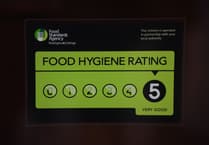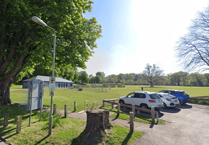CHILDREN with a visual impairment in Devon have helped Devon County Council (DCC) to design a new custom-made armband and lanyard to help others more easily recognise that they have a disability.
And both designs have been a big hit with young people who have told the council that these aids have had an immediate impact and made a big difference to their day-to-day lives.
More than 600 children and young people in Devon live with a visual impairment which affects their learning, development, independence, inclusion, and their confidence.
But, because it’s a disability that isn’t visible to others, this can inadvertently lead to children and young people not being treated with the care and consideration that they deserve and are entitled to.
Children have told DCC that they have experienced a lack of understanding from people and gave examples of when they had been excluded from social participation and activities or unable to use facilities as a result of this lack of recognition.
Usually those who are visually impaired use an awareness aid, such as the internationally recognised white short ‘symbol cane’ or white ‘long cane’.
But these aids are designed with adults in mind, and children told the council’s rehabilitation officer for Visually Impaired Children (ROVIC) service that they needed something to suit their age group.
One nine-year-old girl the council spoke to shared that sometimes her cane made her feel ‘embarrassed’.
So, DCC’s ROVIC service set out, with help from young people, to design two new visual awareness aids that they felt ‘comfortable and confident’ using.
Sue Pilkington, Clinical Service Manager of the ROVIC Service, said: ‘Hearing what young people in Devon had to say motivated us to make a difference, and to create alternative ways to help others recognise that a young person has a Visual Impairment.
‘Alongside whatever we came up with needed to help them feel confident, comfortable and not embarrassed.
‘One of the challenges was ensuring, that no matter where the young person is, they would be immediately recognised as having a visual impairment.
‘Symbol canes are internationally recognised, whereas armbands, depending on the country or county, can differ; meaning that the lanyard and armband had to be easily recognisable.’
The team at Devon County Council then set about talking to young people and their families as part of the design process.
‘Having their involvement in the process was vital,’ added Sue.
‘We not only wanted to provide an alternative but for them to have a say on how they would like others to perceive them and be aware of their disability.
‘We also wanted to provide a choice of two different options they could use, depending on the situation and the visual aids needed to be versatile enough to use on a pushchair, rucksack, or wheelchair for instance.’
The armbands in particular were redesigned several times until, finally, they settled on soft, hard-wearing, comfortable armband made from ‘stretchy’ material.
Created by a Devon-based firm called ‘Brand It’, the final design displayed an easily recognisable partially shaded eye symbol.
Jemima, mum of Lexi, said that her daughter had only been wearing the aids for a short time, but they had already seen a significant difference when they are ‘out and about.’
She added that she noticed that people seemed more willing to make allowances for her daughter and give her space.
‘Whether she is walking into somewhere like KFC or out on a bike ride, it’s like the parting of the Red Sea!’ she added.
While a parent of Alex said: ‘I think both items are a great idea.
‘The lanyard, in particular is a bit hit with Alex; so many people wear lanyards that it doesn’t make him stand out in the wrong way.
‘It feels like a well thought out and executed aid.’
Cllr Lois Samuel, Cabinet Member for Children’s SEND Improvement Services, said: ‘I’m delighted to see that this project has so quickly made such a positive difference to the lives of children with a visual impairment.
‘The ROVIC service is committed to continuously improving options and increasing independence, confidence, and inclusions for children and young people with sensory impairment.
‘Our training and support programmes aim to provide opportunities for children and young people to reach their goals, and we know that these recognition aids could make a real difference in heightening awareness of their visual difficulties to others, and ultimately help maximise personal safety whilst travelling out and about in the community and their confidence.’




